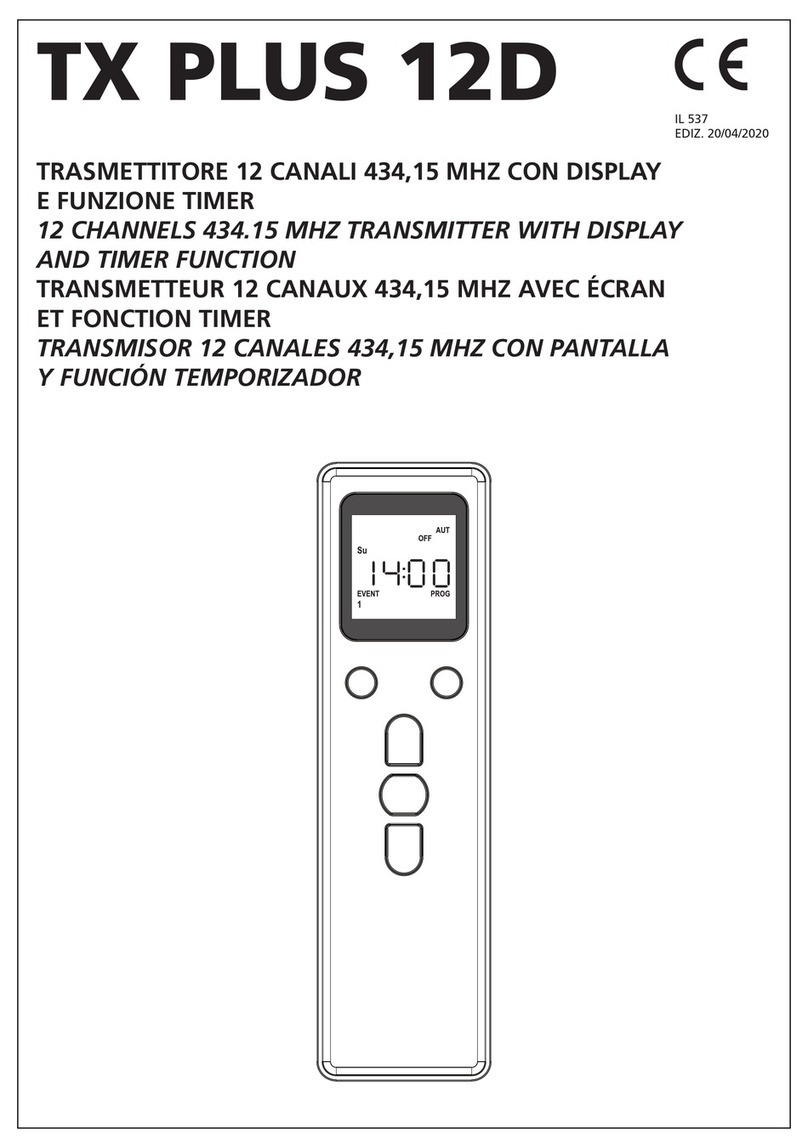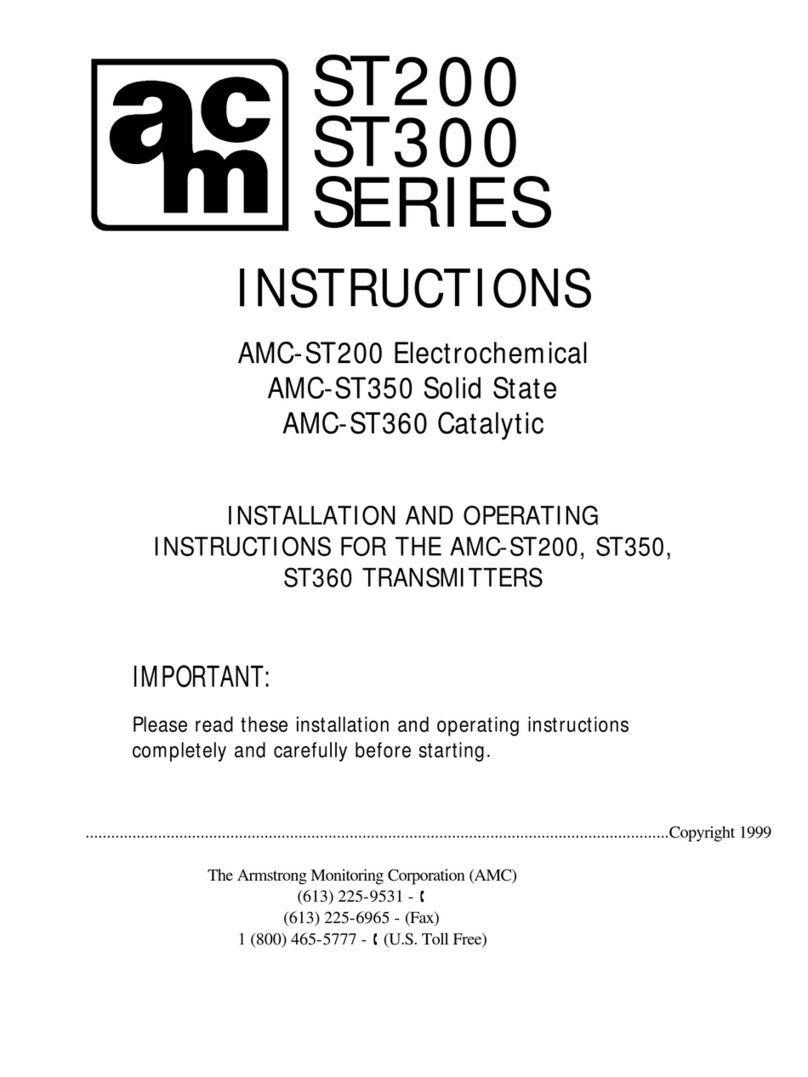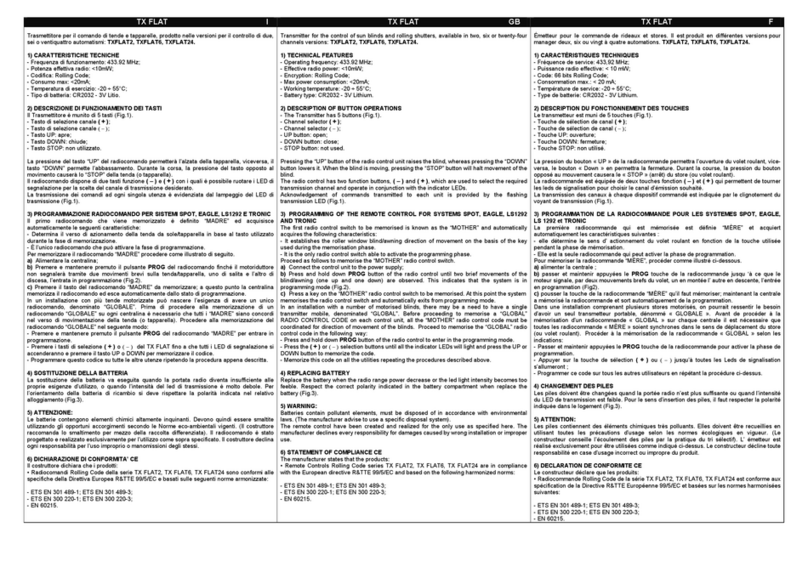
AMC-200 Transmitter
iii
1 WARRANTY
The AMC-200 Series Transmitter is warranted against defects in material and workmanship for
a period of two (2) years from date of delivery. During the warranty period, The Armstrong
Monitoring Corporation will repair or replace components that prove to be defective in the
opinion of AMC. We are not liable for auxiliary interfaced equipment, or consequential damage.
This warranty shall not apply to any product, which has been modified in any way, which has
been repaired by any other party other than a qualified technician or authorized AMC
representative, or when such failure is due to misuse or conditions of use.
1.1 LIABILITY
All AMC products must be installed and maintained according to instructions. Only qualified
technicians should install and maintain the equipment. AMC shall have no liability arising from
auxiliary interfaced equipment, for consequential damage, or the installation and operation of
this equipment. AMC shall have no liability for labour or freight costs, or any other costs or
charges in excess of the amount of the invoice for the products.
THIS WARRANTY IS IN LIEU OF ALL OTHER WARRANTIES, EXPRESSED OR IMPLIED,
AND SPECIFICALLY THE WARRANTIES OF MERCHANTABILITY AND FITNESS FOR A
PARTICULAR PURPOSE. THERE ARE NO WARRANTIES THAT EXTEND BEYOND THE
DESCRIPTION ON THE FACE THEREOF.
1.2 MODIFICATIONS AND SUBSTITUTIONS
Due to an ongoing development program, AMC reserves the right to substitute components and
change specifications at any time without incurring any obligations.
1.3 PRODUCT RETURN
All products returned for warranty service will be by prepaid freight and they will only be
accepted with an R.M.A. number issued by AMC. All products returned to the client will be
freight collect.
WARNING
USING ELECTRICALLY OPERATED EQUIPMENT NEAR GASOLINE, OR GASOLINE
VAPOURS MAY RESULT IN FIRE OR EXPLOSION, CAUSING PERSONAL INJURY AND
PROPERTY DAMAGE. CHECK TO ASSURE THE WORKING AREA IS FREE FROM SUCH
HAZARDS DURING INSTALLATION OR WHEN PERFORMING MAINTENANCE, AND USE
PROPER PRECAUTIONS.































